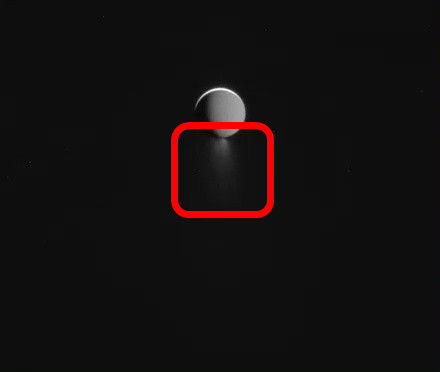4 celestial bodies in the solar system where extraterrestrial life can be expected

In September 2020,
The four most promising worlds for alien life in the solar system
https://theconversation.com/the-four-most-promising-worlds-for-alien-life-in-the-solar-system-146358
◆ 1: Mars
Mars is one of the most earth-like planets in our solar system. In 24.5 hours, the length of the day, the Polar changing the size of the seasonal ice caps addition to that there is, once many traces indicating that the abundant water there was confirmation has been.
In addition, methane gas, which may be produced by biological processes, has been detected in the atmosphere, and it has been found that there are multiple saltwater lakes under polar ice.
It turns out that there are several saltwater lakes underground on Mars, increasing the possibility of discovering life --GIGAZINE

by Kevin Gill
'Given the evidence that Mars used to be a more calm environment, it's possible that life could have been born on Mars. Today, Mars has a thin atmosphere, and the surface is from the Sun and space. It is not protected from the radiation of the Sun, but if there is water beneath Mars, it is not impossible to think that life is alive there. '
◆ 2: Europa
Europa is Jupiter's second satellite, discovered in 1610 by astronomer Galileo Galilei. It is slightly smaller in size than the Earth's moon, the Moon, and its surface is covered with ice.
Europa is an ice world far from the Sun, but it is constantly deformed under the influence of gravity from Jupiter and other satellites, and the friction causes tidal heating that heats the inside of the star. It is estimated that this heat melts the ice, causing the sea to reach a depth of more than 100 km under the ice layer, and it has been observed that water actually spouts from the surface layer of Europa.
Observing the eruption of water from the surface of Jupiter's moon 'Europa', taking a step forward to discover extraterrestrial life --GIGAZINE

Regarding Europa, Mr. Dorian said, 'The ice on the surface of Europa acts as a barrier to protect the underground sea from the intense radiation from Jupiter and the cold of the universe. Also, it seems that the bottom of this sea is in the sea of the earth. There may be hydrothermal vents and submarine volcanoes. Hydrothermal vents and submarine volcanoes on Earth often nurture very rich and diverse ecosystems. '
◆ 3: Enceladus
Enceladus is the second satellite that orbits Saturn in 33 hours and is an icy planet similar to Europa.
It has been found that a liquid sea extends under the ice of Enceladus. Below is a video of the Enceladus geyser released by NASA in 2017.
14 hours watching the plume at Saturn's moon Enceladus, our last dedicated observation of this singular scene https://t.co/EqLPb6MsbO pic.twitter.com/hW3BVUExcz
— NASA Solar System (@NASASolarSystem) September 10, 2017
The images captured by the Saturn probe Cassini clearly show the appearance of a huge geyser spouting into outer space.

'The presence of organic molecules and silicates as well as water has been detected in the geysers of Enceladus, which is necessary for life because of the presence of hydrothermal vents at the bottom of the sea in Enceladus. It's a strong proof of the release of various chemicals into the sea. '
◆ 4: Titan
Saturn's sixth satellite, Titan , is the only celestial body outside of Earth that has abundant atmosphere and liquids on the surface of the earth. Titan has dark orange clouds containing organic matter, seasonal rains and dry seasons like the earth, and sand dunes created by the wind, but unlike the earth, methane , not water, plays a leading role in meteorological phenomena. It has become.
Regarding the potential of Titan, Mr. Dorian said, 'Because it is far from the sun, the surface temperature of Titan is as cold as minus 180 degrees. However, because Titan has abundant chemical substances, life on earth It is imagined that there is a radically different life form. '
The aforementioned Cassini, which made a great contribution to the research of Saturn and its satellites, ended its operation in 2017 and rushed into Saturn and burned out, but in 2026 a new exploration mission ' Dragon Fly ' was launched. Plans are underway to set out for Titan.
NASA Announces Saturn's Satellite Exploration Mission 'Dragon Fly' Aiming to Discover Extraterrestrial Life --GIGAZINE

Related Posts:





